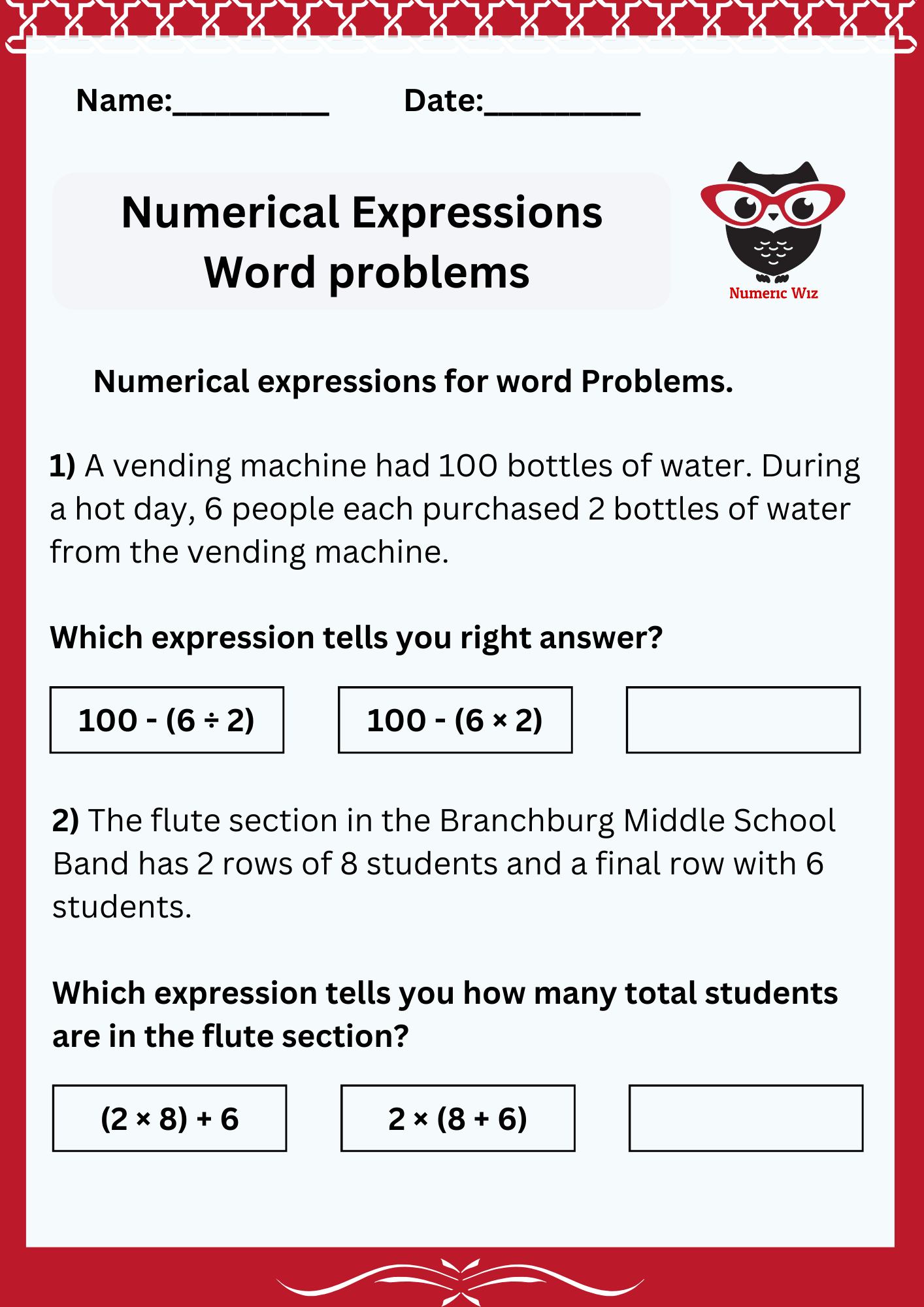
Numerical Expressions and Word Problems (Grade 5)
In Grade 5, students learn to write numerical expressions that represent calculations and to interpret these expressions without solving them. A numerical expression combines numbers and operations like addition, subtraction, multiplication, or division. When we encounter word problems, we can turn those words into numerical expressions.
When you read a word problem, the goal is to figure out what math operation to use and how to express that in numbers.
Word Problem: Lina has 7 apples, and she buys 5 more. How many apples does she have now?
To write this as a numerical expression, you would say:
7 + 5
This shows that you are adding the apples Lina already has to the ones she buys.
Word Problem: Tom had 10 candies, but he gave 4 to his friend. How many candies does he have left?
The numerical expression would be:
10 - 4
This represents the candies Tom has after giving some away.
Word Problem: "A farmer has 12 chickens. If he buys 5 more and then sells 3, how many chickens does he have now?"
Here, the expression would be:
(12 + 5) - 3
This shows the addition of the new chickens followed by the subtraction of the ones sold.
Interpreting a numerical expression means explaining what it represents without solving it.
For example, for the expression (12 + 5) - 3, you might say:
First, add 12 and 5 to find the total number of chickens, then subtract 3 to see how many chickens remain after the sale.
Being able to write and interpret numerical expressions helps students understand math in real-life situations. It allows them to break down problems and communicate their thought processes clearly.
Let’s practice together by turning word problems into numerical expressions!
For a limited time
